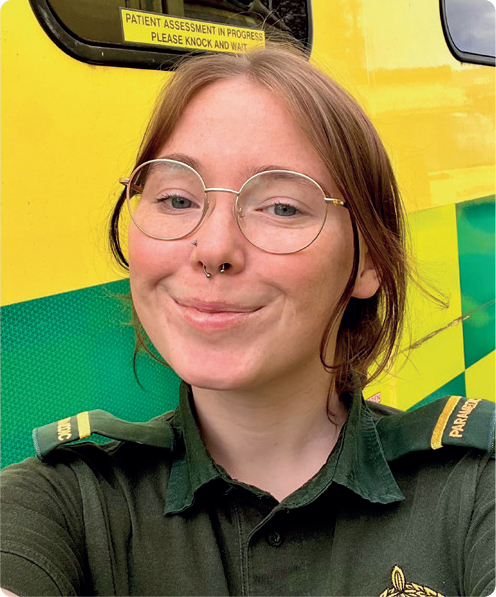
In the April issue, I shared my experience of the Newly Qualified Paramedic (NQP) recruitment process, and provided some tips on preparation. Since then, I have completed a 3-week induction and a handful of observational shifts, and have settled into my new rota as part of a double crew ambulance (DCA).
The first week of the induction was dedicated to all things corporate such as policies and procedures—how exciting. However, the second week turned to clinical skills, providing me with the opportunity to get hands on with new equipment I had not used in my training in Manchester. Moreover, I was able to practise the paramedic skills I had not engaged in the 8 long months since finishing university, such as intravenous cannulation. I found this to be very beneficial, as it allowed me to re-familiarise myself with these skills, but with the support of experienced paramedics. I really enjoyed the final week of the induction, as this revolved around the ambulance, getting to know its layout and how it drives.
I was given a few observational shifts, the purpose of which was to familiarise myself with the station, the area, workings of the hospitals and local pathways, while being supported by my experienced colleagues. I didn't really feel like a paramedic at this stage, more like a student again as there were three of us! I found a lot of similarities to working in Manchester, but the most noticeable difference is the prolonged waiting times outside accident and emergency (A&E), and I have seen the impact this has upon patients and colleagues. However, I am trying my best to remain positive!
My first ‘official’ shift rolled around and it was time to jump on a truck as part of a DCA. I was definitely nervous now, as I didn't have my mentor as a comfort blanket! I arrived early as there were a few pre-shift checks to do that were new to me, such as controlled drug sign-outs. Thankfully, as part of the NQP programme, I am required to work with an experienced paramedic for the first 3 months.
As a student paramedic, I believed that the best way to learn was to be ‘thrown into the deep end’. I definitely felt like that after my first few shifts as a paramedic. The majority of my patients required paramedic intervention and transfer to hospital. I was also presented with conditions I had not encountered as a student, such as an Addison's Crisis and a patient having a seizure due to hypoglycaemia. Inside, I was terrified as I had never had a patient seize in front of me. I forgot my own advice to ‘go back to basics’ until my crewmate reminded me of the ABCs. I have also learned that JRCALC is my best friend.
Upon reflection, the past week has been challenging in terms of a new place, new people, making appropriate decisions and starting my NQP portfolio. Nonetheless, it has been equally as rewarding as I have learned a lot in a short space of time and have witnessed the positive impact of my clinical decision-making on my patients and their families. In addition, I am very fortunate to be surrounded by supportive colleagues, from my crewmates to my Clinical Support Officer.
I am looking forward to my next run of shifts and I hope to continue making a positive impact on patients.


